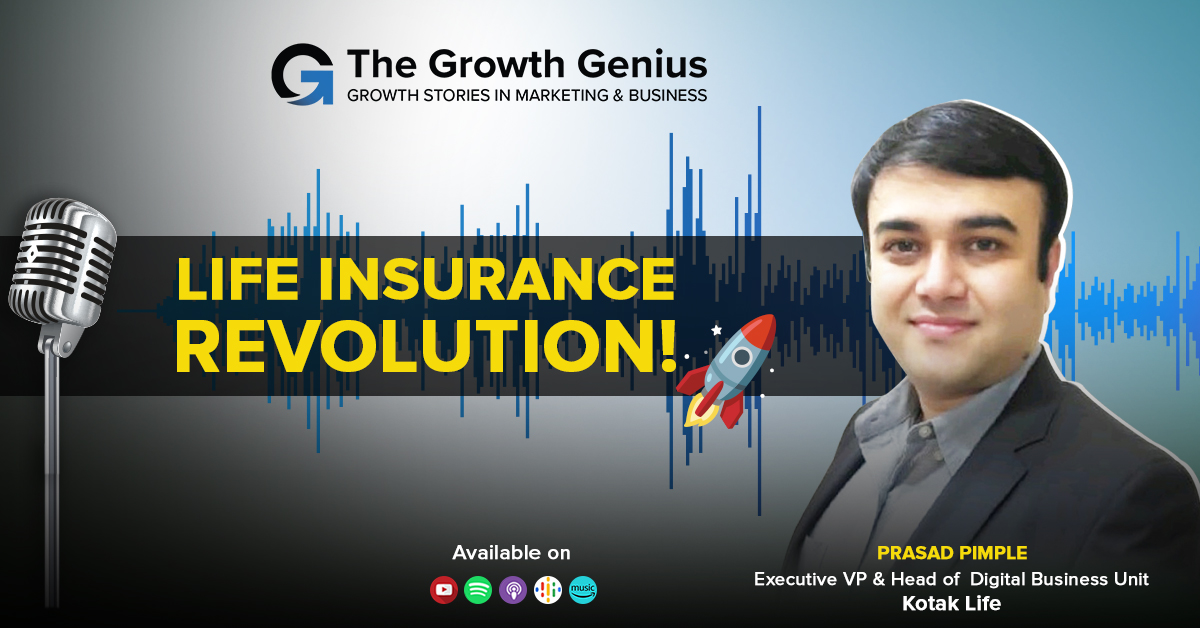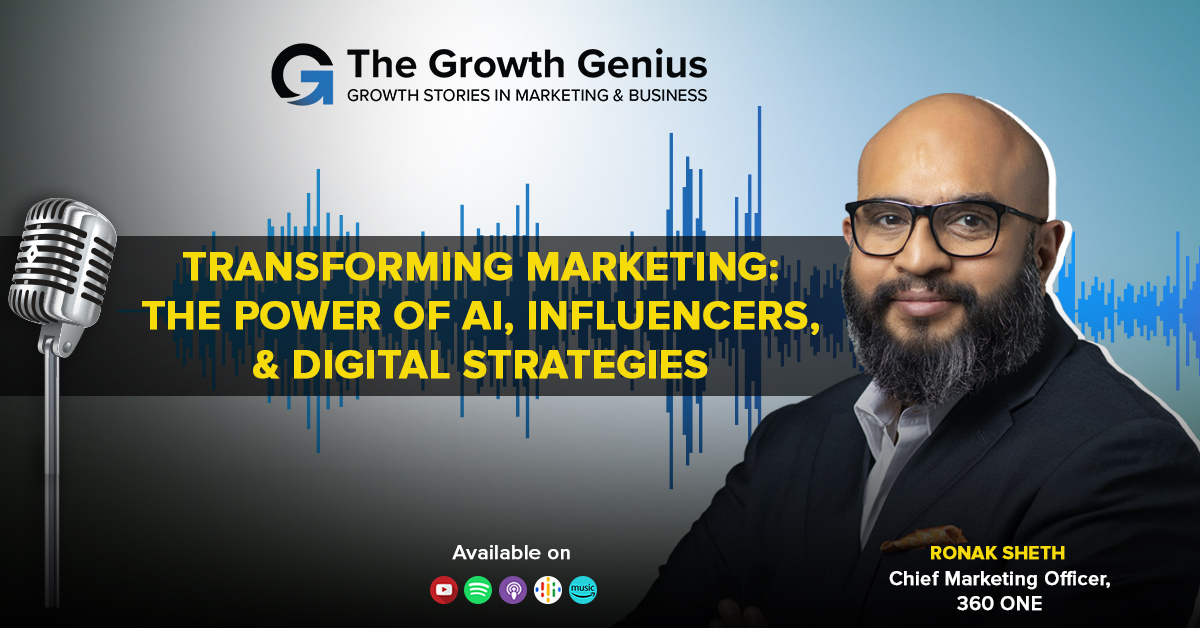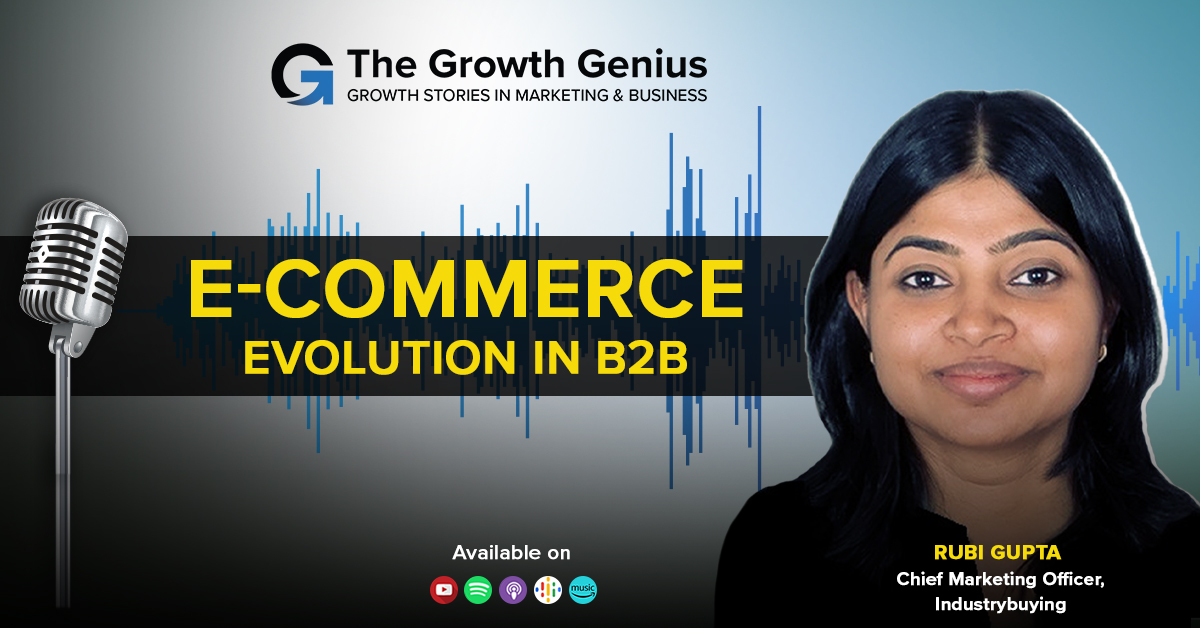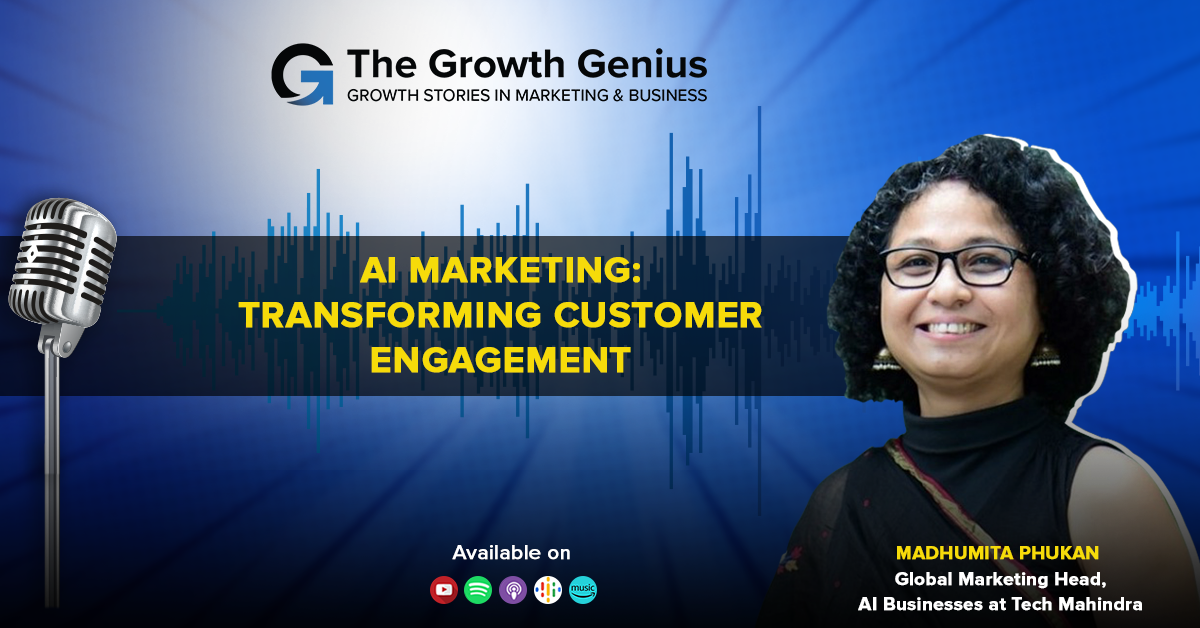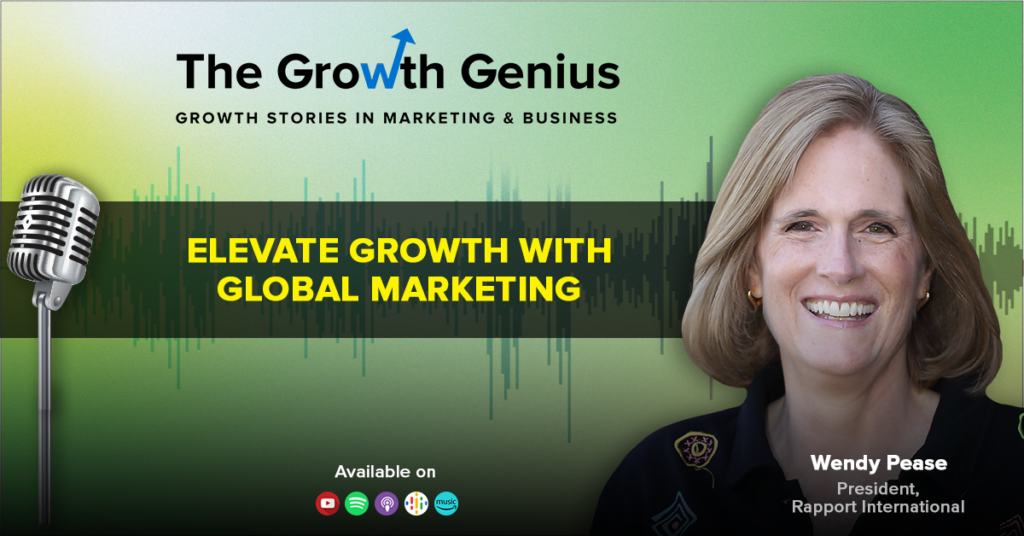
Witness an Increase in your ROI
Unlock higher rankings, quality traffic, and amplified conversions through tailored award-winning SEO strategies.
|
Getting your Trinity Audio player ready...
|
Listen on your Podcast app
Summary
In this podcast episode, the focus is on global marketing strategies for building rapport internationally. The guest speaker shares insights on how businesses can effectively expand their reach and connect with diverse audiences across the globe. Key topics discussed include the importance of cultural understanding, localization, and personalization in global marketing efforts. The guest emphasizes the need for businesses to adapt their strategies to different markets, languages, and cultural nuances. By implementing these global marketing strategies, companies can establish strong relationships with international customers and drive business growth on a global scale. This podcast provides valuable insights and practical tips for businesses looking to enhance their global marketing strategy and succeed in the international market.
Key Take Aways
- Understand the target audience: Digital marketers should have a deep understanding of the target audience’s cultural nuances, preferences, and behaviors to create effective global marketing strategies.
- Localization is crucial: Adapting marketing content to the local language, culture, and context is essential for building rapport with international audiences.
- Research is key: Conducting thorough market research is vital to identify the target market’s needs, preferences, and competition in order to develop successful global marketing strategies.
- Leverage social media: Utilizing social media platforms that are popular in the target market can help digital marketers reach a wider audience and engage with them effectively.
- Optimize for search engines: Implementing search engine optimization (SEO) techniques specific to each target market can improve visibility and organic traffic to the brand’s digital assets.
- Build partnerships: Collaborating with local influencers, businesses, or organizations can help digital marketers establish credibility and expand their reach in international markets.
- Tailor content for each market: Customizing marketing content to resonate with the local audience’s values, beliefs, and interests can significantly enhance engagement and conversion rates.
- Monitor and analyze performance: Regularly tracking and analyzing key performance indicators (KPIs) can provide valuable insights into the effectiveness of global marketing strategies, allowing digital marketers to make data-driven decisions and optimize their campaigns.
Read Transcript
Wendy Pease :-How do you attract clients, how do you engage them and then how do you retain them, attract, engage, delight. Marketing is all about connecting with your buyer and if you make them feel comfortable, they are going to be warmer to you and want to work with you. It’s about building those relationships, so I think technology in the industry and how it’s used will be, you know, that’s a trend to follow.
Shelly Singh :-Welcome to The Growth Genius series brought to you by DMAAsia and Infidigit. My name is Shelly and I’m your host. Today our guest speaker is Wendy Pease,
Wendy Pease is a president and owner of Rapport International, a language service company that provides high quality written translation and spoken interpretation in over 200 languages. She’s the author of the book “The Language of Global Marketing” and host of the podcast “The Global Marketing Show”. Wendy is passionate about connecting people across languages and cultures. She lived in Mexico, Taiwan and the Philippines where she fell in love with different cultures and came to understand that we all are human no matter the language we speak. Welcome, Wendy.
Wendy: – Thank you Shelly. It’s great to be here.
Shelly: – Good to have you. So, Wendy, tell our listeners about your professional journey and how you developed your interest in the global marketing and translation services, also what inspired you to write your book?
Wendy: – Okay, a lot of questions. Well, my professional journey started many years ago when I was a child and lived internationally and had to figure out how to communicate when I didn’t speak the language. You know, we were all English speaking when we went to the different countries and in Mexico I went to a half a day in for school in English and half a day in Spanish and we were supposed to actually move to India, but there was some politics that happened and so we ended up in the Philippines and then Taiwan instead. So it took me many years to get back over to India to have a visit there and I love the country, but that’s, you know, it’s just every country that I go to there’s something different, the language, the culture, you know, the spirit of being wherever you are. And so about 18½ years ago I was laid off from a job while I was on maternity leave and I thought I don’t want to go back to corporate because it’s just too hard. I didn’t want to have the travel that it entailed when I had young kids and it just seemed like I was putting in so many hours away from them. So somebody mentioned why don’t you buy a business and I kind of laughed because I was like, “Well, with what money?, you know, I need to work to provide for myself and, you know, my family.” And I started daydreaming online and I came across this little translation company for sale and I thought oh, how interesting, I’ve always loved languages and cultures and travels, so let me look into it. So it was the only company that I looked at to buy which is highly unusual. Usually when people are looking to make an acquisition, they look at many, many and go through the due diligence but the stars aligned, I bought it 18½ years ago, I was able to move it into my house and set up a virtual office before there was such a thing. There was no cloud, there was no voice–over-IP that really worked, you know, and so we figured out how to do it with computers and dial-in servers and stuff. So it’s so much easier today.
There was nothing about culture and running diverse teams but it’s an amazing journey. I mean I just I work in an industry that I love. There’s new information all the time, we focus on high quality translation, love working with exporters and people who want to work across borders and so we do a lot of consulting with them on best practices. So that’s what led me to write the book.
The book “The Language of Global Marketing”, it’s available on Amazon or Barnes Noble wherever you get it, there’s electronic version on a paperback and a recording that I actually did and I wrote it because it just number one, talks about the world as a market rather than just looking at , you know, your neighbourhood or your country, open up and look at the world and see where the best market is for your products and services. And then if you are going to go International, what are the stages that you go through or things you need to consider for global marketing for connecting with your buyers and bringing them through the sales journey.
Shelly: – That’s great. I know it’s a very interesting topic. So please tell our listener that how global marketing can be a significant growth driver for any company?
Wendy: – U.S Department of Commerce did research and they said that the companies that export have higher revenues, higher profits, pay higher salaries, have higher valuations, higher IP and higher innovation and they’re also more stable and the reason for that is, you know, you’re diversifying your markets and you’re getting input from different clients and customers that give you feedback on your product. So you get better and stronger and then you’re leveraging different marketplaces. So no matter – in the United States companies don’t think early enough to go International, if you’re in Israel or you’re in Sweden you think International from the start. If you have something that can sell internationally, they think it from the start because their domestic markets are so small they want to get into some of the larger markets.
Shelly: – Yeah. That’s great. So let’s start with the basic, please tell us the steps involved for global marketing for a company to start in a new market?
Wendy: – So number one is to think about your strategy, okay, so you have to have a corporate strategy. Too often I see companies say well we should translate into Spanish or, you know, Chinese or whatever language and they start with that rather than doing a strategic analysis of , you know, where our company strengths what can we leverage, what consumers or customers are interested in our products and what’s the competition like. A lot of companies from the United States in particular will go to other English-speaking countries because they don’t have to be afraid of the language, but we do translation from one English to another, you know, that Indian versus UK versus American versus Australian English is very different. So you still need to do translation and so you want to think about your strategy from a corporate level. Then you want to think about your marketing strategy, how do you attract clients, how do you engage them and then how do you retain them – attract, engage, delight, that’s a circle that HubSpot uses.
So to attract people are researching online and they’re saying I need to know how to solve this problem I have. So they’re going online and looking for the problem, they’re looking for solutions, then when they get an idea of that, they go on to, okay, now I want to know about your company, Shelly, why are you better, what solutions can you provide, what are substitutes or competitors to that. And then engaging is after the sale, how do you up-sell, get introductions from them, provide post-sales support, so all of that. So when you’re looking at global marketing after you figure out corporate strategy, you want to figure out your marketing strategy. What is that content you have to create to either do online marketing or support your sales force? And you want to take your most popular content and translate that into the targeted language and culture so you can attract, engage and delight customers across the language. That’s how you bring it down into your multilingual strategy or your exporting strategy with your communications.
So once you figure out your strategies in alignment then you can deep dive into your communications. Now and I talked about that picking out which content, which language, what makes sense, how do you culturally adapt. The other thing that I like to point out to people that are considering this is that there are a lot of free supports across the countries to help you export. Here in the United States, we have state trade reps in every state to help people and oftentimes their services are free and sometimes they offer grants to help companies. The reason for that is because companies want their businesses to export because it’s income coming in from other parts of the world. So if you’re in the United States you can certainly go to our website and if you search step S-T-E-P, it’ll come up with a list of how you link through to who your current contact is. If you’re in another country and you’re interested in exporting, go to your Department of Commerce or whatever it’s called or go to the Embassy located in your country to the country you want to enter because they will help you give you contacts and introduce you to the world of exporting, so you can learn about what your country will support you in exporting.
Shelly: – Very good information. So what are the two biggest mistakes or challenges in global marketing that can stop any company to go global?
Wendy: – One is not aligning strategies. I see people that pick all sorts of different reasons, you know, their Google analytics are showing visitors from some place, a salesperson says if you translate into this I can sell, going into English-speaking countries because the language is familiar and then they have to deal with all the other competitors. And then starting their multilingual strategy with we need to translate our website, you know, and then it becomes a big cost prohibitive project products they’re going to sell where so it makes sense, so that’s the number one.
The second thing is they do all this market entry strategy work and they’ll figure out, you know, how we’re going to do payments, how we’re going to do logistics, you know, the employees we’re going to hire, but they don’t spend enough time thinking about how are we going to connect with the buyers and so they become interested in our products over other products. And so oftentimes I’ll see people even trying to enter the United States and they want to go after the whole market rather than picking a geographic region because the United States width is almost as long as the continent of Africa is north to south. I just figured that out with somebody the other day. So it’s good to pick a geographic region or target market like a company that I know of that does fitness equipment, I actually interviewed them on my podcast The Global Marketing Show, you can just Google Global Marketing Show and it’ll come up, and he talked about exercise equipment from Italy and rather than picking the gym market or the Home Market what they picked was like senior centres and assisted living centres, independent living centres because there was nobody that had that as a niche and their products serviced that niche very well. So their market entry into the United States has been fantastic because they defined this narrow niche which is still so big in the United States.
Shelly: – That’s very interesting. So how do you find a good translation company? What should you look for in a good translation company? What kind of like, you know, checkpoints?
Wendy: – Excellent question. There has been so much differentiation in the translation marketplace since I’ve started working in it. Like our company, we focus in high quality translation, so at Rapport International we have 100% satisfaction guarantee, we have 100^ on-time delivery rate. We do linguistic matchmaking which means if you create content and you send it in to us, we’re going to match the right person to it and then we’re going to keep that person on all that company’s project, so there’s a consistency of voice and there’s knowledge learning that comes along with doing the translation. So that means, you know, it’s continuing to improve.
There are other companies that specialize in machine translation with post editing, that’s a completely different niche. I don’t recommend it for global marketing or anything that you have liability on. It’s really good if your writers are trained to write in a certain style and you’re using a lot of repeat content, then you might be able to get away with some of that. I know there’s an example in my book of a tourism company that says anytime somebody wants to, its TripAdvisor anytime they want to post something in here they have to post it in this certain style and then instead of like heavy descriptions, you know, they check boxes, so it’ll show with images. So they leveraged machine translation with post editing very well because the writers are taught to write in a certain way. There’s other companies that specialize only in one language, like I heard of a company that only does Haitian Creole translation and so they’re, you know, from what I understand they’re good. I’ve never used them or talked to their clients but I’ve heard they focused on high quality. But if you’re going to do multiple languages, you want to develop an agency that can handle the multiple languages, so you want to check on that.
There’s some large companies in the industry that they treat the clients well but I worry about the translation because they don’t do the linguistic matchmaking and you wouldn’t know unless you knew to ask for that. So, you know, you want to find out what the company specializes in. We’ve had a lot of people come to us that they tried machine translation with post editing and now they’re coming back to us and saying well we want human translation that’s culturally adapted. The other thing that you want to look for is, what’s the service you’re going to get? Can you talk to them about your strategy and what you’re trying to accomplish so they can guide you? Do they have an on-time delivery rate? That’s one of the complaints that I hear from people, you know, clients that come to us as they work with people that couldn’t deliver on time and then it slowed down their product launches and their releases. You want to look for a company that carries a liability insurance, so in case there’s any problem there’s Insurance to back up. We’ve carried a Lloyds of London, liability insurance policy ever since before I was here and we’ve never had to access that. I think those are the key things that you want to look for and do they specialize in your industry.
Shelly: – Yeah, of course. So you spoke about AI so do you think that AI will take over human translation?
Wendy: – I don’t think it will take over. I think that’s a big fallacy right now of the quality it could ever take over a human. And I say this for a couple of reasons is one when Google translate came in, you know, 10 or 12 years ago, we all kind of went, you know, what’s this going to do to the industry. And it didn’t change the industry. If you had to get a high quality translation, you still had to go to a human. Now what it did do was open the world to more communication, so if I’m riding in an Uber and I need to communicate with somebody I could pull out my phone and I can use it and we can do it fast and cheap right there, you know. Likewise with ordering in a restaurant getting the gist of something and if I get an email and it’s on a language that I don’t know because I don’t know all 200 languages that we live by, then I can put the email in and get the gist of it. If it’s something I have to deal with then I can take it down that path. If it’s junk I can figure out if I need to delete it.
So, in the industry it’s kind of its risen the amount the demand for translation and it’s separated out what can be just or, you know, just translations what’s called in the industry. I can get the gist of it but it’s not written well versus what needs to be high quality and that’s your marketing and that’s anything that could increase your company liability. with ChatGPT that’s coming out and the improvements in Ai and where that’s going, I still don’t think that it’s going to replace human translators because I’ve played around on it and I look at the quality and again it’s fine for the gist but it’s not high quality. And I read a review on it and ChatGPT was better at more colloquialisms or casual talk whereas Google Translate is more foreign. There’s all sorts of words that are created each year that it won’t keep up quick enough and then there’s all sorts of words that don’t have a direct translation. There’s a game is it called yeah it’s a team sport where people go in and they’re blindfolded and they have to tag somebody and then the other team would go in, it’s quick chasing.
Shelly: – Oh I’m not sure, I’m not sure about that.
Wendy: – I’m just drawing a blank on the name but it’s a sport that’s played over in India and if I could remember the name of it you probably would know it. I’ve heard it’s very big and that there’s national teams all over. We don’t have that sport here in the United States.
Shelly: – okay, I’ll definitely check it out. Yeah, know about Kabaddi but that’s not blindfolded so.
Wendy: – Oh what’s it called?
Shelly: – Kabaddi.
Wendy: – And how’s it played.
Shelly: – There’s a line in between and then there are two teams and then they go and they have to like touch somebody and then come back to their site or something like that.
Wendy: – Yes, yes that’s it, how do you say it Kabaddi?
Shelly: – Kabaddi yeah.
Wendy: – The blindfold the closest game we have to that is called Blind Man’s Bluff so that’s where you blindfold somebody and they have to try to tag somebody but it’s not played competitively, it’s not well known, it’s a children’s game so that’s probably why I got the blindfold in there, so my apologies. But I loved it because it was something so different. There’s no direct translation for that game in English and so how do you handle the translation for that, you know, that’s one example, I’ve got hundreds of examples of what, you know, what Google does to the translation and it doesn’t make sense.
Shelly: – Oh of course yeah, I’ve seen that so many times myself that it doesn’t make any sense because, you know, the meaning could be completely different in one language and when you translate it comes up so different.
Wendy: – Yes, yes.
Shelly: – Great. So my next question is that can you please share some examples of the use case studies where the global marketing brought you, success maybe any of your customer or your partner with whom you work?
Wendy: – Sure, yeah, we had a client that he sells a technology that can be used around the world for by manufacturers who make electronic goods, okay. And so the technology tells people what were popular purchases , you know, in the last year or whatever time frame, so these manufacturers can look at what could we make and sell that would be popular. And it grabs data from online sales, store sales, you know, any place people are buying and he noticed, he was very smart he was watching his Google analytics and he noticed that he was getting a lot of people visiting from China and he noticed that they were emailing him for answers to questions. And he thought ha, they can use my technology to get the information because it would make sense to them, I should probably add some translation, you know, translate the email so I can actually sell with them. And we went through a strategy talk and I said, okay, what kinds of questions are they asked and we boiled it down to about five types of questions. And I think I referred to this in my book The Language Of Global Marketing, but they want to know the problems that you can solve, how do they use you, what are alternatives, you know, what’s the pricing. And so I said, “Rather than translating each email which is going to be expensive because it’s got to be custom each time you go, we’ve already figured out they’re answering standard questions. So why don’t you answer those questions on a landing page, we can translate that and then when people come to your site and they speak Chinese they can navigate to that page and read more about it and then actually go through the purchase”. He’s like “That’s a great idea.” So we saved him money, we simplified the buyer’s journey and now he’s able to sell to people that are searching from China.
Shelly: – Wow, very interesting.
Wendy: – Yeah.
Shelly: – Okay, great thank you for sharing.
Wendy: – There’s another one that I can tell you about Korea. It’s a company that manufactures high-tech clothes and they were competing for some business in South Korea and they said, you know, the meeting’s going to be in English but all the people that are going to be in the meeting are native Korean speakers. They said, you know, we don’t need an interpreter to help facilitate the conversation, but what do you think about translating our PowerPoint. I said “I think it’s a brilliant idea.” So we translated it for them, they went over, they did their presentation all in English but the PowerPoint slides were in Korean, guess who won that deal? They won that deal and the client said that , you know, they really appreciated that, you know, they had a good product but they appreciated they were the only ones who had translated their PowerPoint into Korean.
Shelly: – Yeah. When you make people understand in their own language, it creates a lot of – huge impact and definitely they’re going to buy it.
Wendy: – Yes, yeah, because that’s – I mean, you know, marketing is all about connecting with your buyer and if you make them feel comfortable they are going to be warmer to you and want to work with you. It’s about building those relationships.
Shelly: – That’s right. So our next question is on plan so what are the top three trends in global marketing to watch for?
Wendy: – Top three trends, well, I think the whole Chat GPT, AI machine translation, I think it’s going to raise the ability of people to talk across languages. I don’t think it’s going to replace human translation. So I think the trend now is that everybody’s saying oh you’re going to be able to just put this in and translate and talk to anybody around the world. I mean that’s a dream, that would be nice, but that’s still sci-fi but it will be interesting to see how we leverage that in. After machine translation we came out with translation memory and so what that is if you give us something, Shelly, to translate then we can translate and create a memory of that so if you do another brochure that uses half the copy that’s the same, then we can pull up what we translated before and reuse that. It saves time and money and it keeps that consistency of voice. So I think technology in the industry and how it’s used will be, you know, that’s a trend to follow.
I think another trend to follow, we’re a globalized world and there’s no going back. Even if we have trade disagreements and there’s changes and, you know, cultural differences, the world is getting richer, the disposable income across countries is getting higher and we’re dependent on each other for goods and services. And so I think rather than being afraid, people that do global trade know the benefits of it and so I think the trend will be to continue this growth of global trade. I hope that our politicians can keep the world friendly and realize how important global trade is to every person on this world and so let’s continue to rise, the economic status and the availability of products worldwide. I think that would benefit us all. So those are two trends.
A trend I’d like to see is more people getting involved and doing translation interpretation work. There’s a need for bilingual people that are fully trained in it, you can get degrees in translation or interpretation and we look for people who are trained, you can’t just find anybody who’s bilingual to do it. So that’s a huge opportunity if anybody’s listening to, you know, become fully bilingual.
Shelly: – That’s very right. In fact I was interviewing another guest speaker and so he was telling me that, you know, what, there are no boundaries now. There’s an example of China that despite government controls 40% of suppliers on Amazon are Chinese. They’re still selling from China, right. It was really awesome to know that how people are still trying to reach out to other countries and other buyers and, you know, trying to make their business global.
Wendy: – That is interesting, I hadn’t heard that so 40% of sellers on Amazon are Chinese. I wonder what percent of American companies or Indian companies are on the Alibaba which is the big Chinese marketplace.
Shelly: – Yes, there are, there are many and it’s awesome because buyers can be anywhere, right?
Wendy: – Yes.
Shelly: – They might need your product.
Wendy: – Yes.
Shelly: – This was very interesting, so great. So this brings us to our last segment that’s about you. Please share with us any one passion you follow and how it elevates your profession?
Wendy: – I think I’ll talk to a couple of things. One is Soccer Without Borders, so I try to make time to volunteer with them every year. I think it’s a fantastic organization, it’s global what the founders have tried to do is provide access to playing soccer to more challenged communities and so the kids are given a coach and a uniform and they play on a team and through that they build community, education, healthy eating is all encouraged and they’ve gone places around the world. So we have a group here that is in East Boston and so sometimes I’ll go and I’ll drive the kids to their games or I’ll go to their fundraisers and so, it’s just an organization that I really like because I really do like soccer. I started playing my 20s, I stopped after I broke my leg a few years back but I still I love watching the World Cup, so that’s one.
Another one is Entrepreneurs Organization, so if you own a business there’s Entrepreneurs Organization is focused for on companies that want to grow. They’ve got chapters all over the world and I’m so excited because I’m going to South Africa , you know, in April because I sit on the board for the Boston Chapter and so the leadership from all the chapters from around the world are going into Cape Town, South Africa this year and I’m looking forward to meeting other business owners there.
Shelly: – Yeah that’s great. So where can our viewers listeners find you and connect with you and also where can they buy your book?
Wendy: – Ah thank you for asking. Yes, probably the easiest is to go to Link Tree, this is a fabulous site. It was brilliant for someone to start it’s linktr.ee/wendy pease and if you go to that link, it will give you all my other links, how to get to our website where we have a learning centre about global marketing. We’ve got a mini course on there you can download. It’s got a link to Amazon to buy the book. It’s got a link to a couple of free chapters. It has all my social media. I’m very active on social media and like to post language things. I love to hear from people. If you find funny translations or no words that don’t translate, send them in. So that’s the best place. And the company name is Rapport International, you can always find me through there too.
Shelly: – Great. Thank you so much, Wendy, for your insights into the global marketing and translation services. I hope this session will inspire the listeners who think about going global. Thank you so much.
Wendy: – Thank you Shelly, I appreciate you having me.
Shelly: – To all our viewers, thanks for listening. If you enjoyed this episode, leave a rating and review, I’ll see you next time in a new episode with a new speaker. Till then peace.


